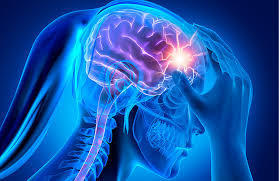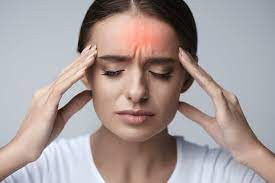Definition
Status migrainosus is a migraine attack that lasts for more than 72 hours. It is also defined as a migraine attack that is uncontrolled or unresponsive to common migraine therapies. These attacks are usually very intense, requiring medical attention and visits to the emergency room.
Status migrainosus differs from chronic migraine (long-term). In chronic migraine, headaches occur 15 or more times a month, whereas status migrainosus is a continuous migraine attack with a headache phase lasting 72 hours or more.
Causes
The exact reason why a single migraine attack can develop into status migrainosus is not well understood. Certain triggers or a combination of triggers can cause a migraine attack to develop into status migraines. These triggers include:
- Use or discontinuation of certain medications
- Delayed meals
- Lack of sleep
- Lack of exercise
- Psychological stress
Risk factor
Migraines can progress to status migrainosus if certain factors are present, such as:
- Not receiving early enough treatment after the attack begins
- Not receiving appropriate treatment
- Overuse of headache medications
Symptoms
Headache attacks in status migrainosus are characterized by throbbing pain on one or both sides of the head. Additionally, you may experience:
- Sensations of flashing lights or other visual disturbances called aura
- Sensitivity to light and sound
- Nausea and vomiting
- Fatigue
- Difficulty thinking, concentrating, or communicating
Status migrainous can last at least 3 days. You are also at risk of dehydration and loss of sleep due to prolonged vomiting and pain.
Diagnosis
To diagnose status migrainosus, the doctor will ask about your medical history and symptoms to rule out other possible causes or types of headaches. Some other causes of headaches include:
- Hemicrania continua (continuous one-sided headache)
- Persistent daily headache
- Post-traumatic headache (headache occurring after injury)
- Headache due to medication overuse
The doctor will also look for signs and symptoms to ensure you are not experiencing a more serious condition than a migraine, such as a stroke. Some signs the doctor will look for include:
- Sudden changes in vision or double vision
- Sudden tingling or weakness
- Changes in speech
Once the diagnosis is established, the doctor will proceed with a treatment plan.
Management
If you experience status migrainosus, the doctor will initially prescribe migraine medications. If symptoms worsen you cannot maintain adequate fluid intake, or if the headache is very intense, the doctor will prescribe combination therapy usually administered via infusion or injection. Treatment can vary for each patient.
General treatment for status migrainosus includes:
- Nonsteroidal anti-inflammatory drugs (NSAIDs) to control pain
- Medications to stop the migraine attack
- IV fluids to replace lost body fluids due to nausea and vomiting
- Anti-nausea medication
- Magnesium citrate
- Steroids
- Nerve blocks
The doctor will monitor your condition and may administer double doses and continuous infusions over several days. If you are prone to status migrainosus, the doctor may also prescribe a combination of medications to be taken at home to prevent severe future attacks.
Status migrainosus is more difficult to treat than regular migraines. However, treatment options are still available to relieve symptoms and help you feel better. Managing and preventing prolonged migraine attacks requires effort from both you and your doctor.
Complications
Some complications that can occur include:
- Migraine infarction or migraine stroke. This rare complication mostly occurs in young women. Brain blood vessels can narrow, obstructing blood and oxygen flow. Migraine stroke can occur suddenly and is an emergency condition.
- Persistent aura without stroke. One in four people with migraines can experience aura. Sometimes, this aura persists for more than a week after the attack. Though rare, you can experience aura and symptoms like difficulty breathing and tingling for months or even years.
- Seizures triggered by migraines. Seizures occur during or shortly after migraines with aura. Epilepsy and migraines sometimes occur together, but the exact cause is unknown.
- Depression and anxiety. People with migraines are more likely to suffer from depression and anxiety than those without migraines.
- Vertigo
- Sleep deprivation. Pain and discomfort can make it difficult for you to sleep. You may wake up earlier or not feel refreshed upon waking. Insomnia is more severe and frequent in people with severe migraines.
Prevention
The best way to reduce the risk of status migrainosus is to start treatment as soon as the first signs of a migraine appear. Learning to recognize pre-headache symptoms can help you know when to take migraine medications. The sooner you address the attack, the more likely it is to stop and prevent it from becoming status migrainosus.
It's important to remember that migraine attacks are not anyone's fault. Migraines are spontaneous events and can occur even if you follow every step of your doctor's therapy and management plan.
If your body does not respond to treatment and you continue to experience migraines four or more times a month, the doctor may recommend preventive medications. These should be taken regularly to reduce the severity and frequency of headache recurrence. These medications include anticonvulsants, blood pressure-lowering drugs (beta-blockers and calcium channel blockers), and some types of antidepressants.
Botulinum toxin (Botox), more commonly known as a treatment for facial wrinkles, has also been approved by the FDA (Food and Drug Administration) for preventing recurrent migraines. There are natural therapy options like magnesium, which is said to help reduce migraine severity and frequency, but more research is needed to determine its effectiveness.
When to see a doctor?
If you have a headache lasting more than 72 hours, it is important to seek medical help or follow the therapy prescribed by your doctor. However, if you cannot maintain fluid intake, you should seek medical help immediately to receive treatment for dehydration and headaches.
Looking for more information about other diseases? Click here!
- dr Ayu Munawaroh, MKK
Status Migrainosus: Symptoms, Treatment, Prevention. (2022). Retrieved 9 September 2022, from https://www.webmd.com/migraines-headaches/status-migrainosus-symptoms-causes-treatment.
What Is Status Migrainosus? | American Migraine Foundation. (2022). Retrieved 12 September 2022, from https://americanmigrainefoundation.org/resource-library/what-is-status-migrainosus/.
12 Complications of Migraine Headaches. (2022). Retrieved 12 September 2022, from https://www.webmd.com/migraines-headaches/headaches-migraine-complications.
Status Migrainosus - Practical Neurology. (2022). Retrieved 12 September 2022, from https://practicalneurology.com/articles/2022-may/status-migrainosus.





/6302128ebf030.jpg)
/62d2449c2c10c.jpg)





